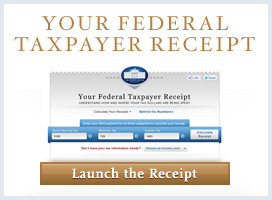Eliminating Waste by Getting Rid of Unneeded Federal Real Estate
Posted by on June 10, 2010 at 10:24 AM EDT
The Federal Government is the largest property owner and energy user in the country, with an inventory that includes 1.2 million buildings, structures, and land parcels. This includes 14,000 building and structures currently designated as excess and 55,000 identified as under- and not-utilized. Currently, Federal agencies operate and maintain more real property assets than necessary, unnecessarily raising costs to the taxpayer.
That is why today the President signed a Memorandum directing agencies to accelerate efforts to remove excess and surplus property for a savings of $8 billion by FY 2012. The Department of Defense anticipates achieving $5 billion in real property cost savings through the Base Realignment and Closure (BRAC) process by the end of Fiscal Year 2012. In addition, government agencies will achieve $3 billion in cost savings through reducing annual operating costs, cutting square footage through expanding telework, undertaking other space realignment efforts (such as consolidating existing space within owned buildings), and selling buildings.
In addition, the Memorandum requires agencies to reduce waste by:
- Eliminating lease arrangements that are not cost effective;
- Streamlining current processes to accelerate the identification of excess assets and disposal of surplus assets;
- Pursuing consolidation opportunities within and across agencies in common asset types (such as data centers, office space, warehouses, and laboratories);
- Increasing occupancy rates in facilities through innovative approaches to space management and alternative work arrangements, such as telework; and
- Combining acquisition of new space with a corresponding reduction in existing space.
The Memorandum also requires more efficient use of remaining real property assets, through saving energy and water, and reducing greenhouse gas emissions.
The Presidential Memorandum on Real Property is part of the Administration’s broader effort to modernize and reform government. Earlier this week, I spoke about this critical topic in an address at the Center for American Progress. The steps outlined in this Memorandum will help us spend taxpayer money wisely and create a more efficient and effective government.
White House Blogs
- The White House Blog
- Middle Class Task Force
- Council of Economic Advisers
- Council on Environmental Quality
- Council on Women and Girls
- Office of Intergovernmental Affairs
- Office of Management and Budget
- Office of Public Engagement
- Office of Science & Tech Policy
- Office of Urban Affairs
- Open Government
- Faith and Neighborhood Partnerships
- Social Innovation and Civic Participation
- US Trade Representative
- Office National Drug Control Policy
categories
- AIDS Policy
- Alaska
- Blueprint for an America Built to Last
- Budget
- Civil Rights
- Defense
- Disabilities
- Economy
- Education
- Energy and Environment
- Equal Pay
- Ethics
- Faith Based
- Fiscal Responsibility
- Foreign Policy
- Grab Bag
- Health Care
- Homeland Security
- Immigration
- Innovation Fellows
- Inside the White House
- Middle Class Security
- Open Government
- Poverty
- Rural
- Seniors and Social Security
- Service
- Social Innovation
- State of the Union
- Taxes
- Technology
- Urban Policy
- Veterans
- Violence Prevention
- White House Internships
- Women
- Working Families
- Additional Issues

